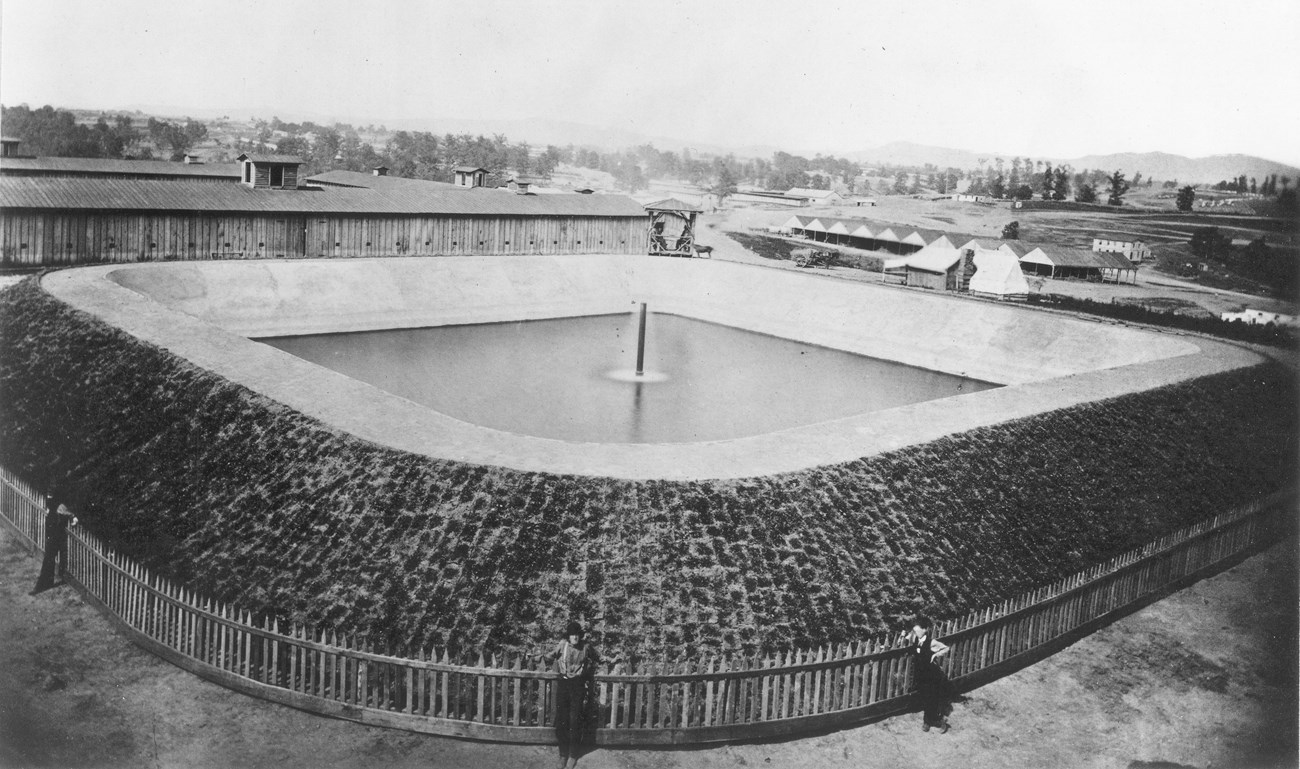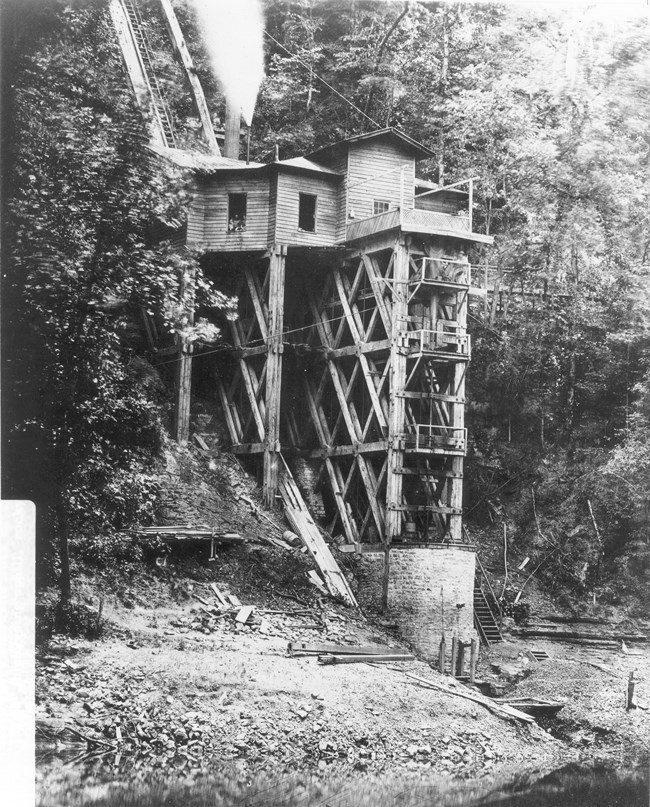
Camp Nelson Photographic Collection, 1864, University of Kentucky Special Collections Research Center Waterworks SysyemOwing to the difficulties which arose from insufficient supply of water to the Camp - all the water being hauled in wagons from the Kentucky River... [Captain Theron E. Hall, Assistant Quartermaster] was ordered...to construct waterworks for the depot. These works have been completed and are now in successful operation. - Major Charles E. Compton, 47th US Colored Troops, June 23, 1864
From its establishment in April 1863 to its closure in June 1866, the engineers assigned to work at Camp Nelson designed numerous industrial facilities. One of the most unique and noteworthy was the waterworks system. While the camp’s location between the palisades of the Kentucky River and Hickman Creek provided strong natural fortifications, these steep rock cliffs made it difficult to access the water and deliver it to the base. 
Camp Nelson Photographic Collection, 1864, University of Kentucky Special Collections Research Center Remnants of the WaterworksWhen the pump is working at its ordinary rate, this pipe (8 inches in diameter) will discharge from 125 to 150 gallons of water per minute into the reservoir.
The pump station and reservoir were dismantled after the Civil War. The steam engine and boiler were shipped by river to Cincinnati, Ohio. The remnants of the reservoir are located on private property. US-27 [Lexington-Danville Turnpike] was expanded in the 1990s. Archaeological surveys discovered sections of the 8-inch lead pipes that distributed water through the camp. A piece of the pipe can be found at Camp Nelson National Monument's museum. |
Last updated: January 6, 2023
